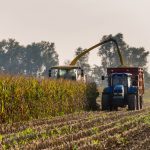Tag Archives weather

Prairie forecast: Very warm west, mild but a little unsettled east
Issued March 13, covering March 13 to 20

Effects of wet corn growing season harm feed quantity, quality
Low starch and silage heating have both been observed

Taking the pulse of plant growth
Plant roots mysteriously pulsate and we don’t know why, but finding that out could change the way we grow things

Precipitation does little for Prairie drought relief
Most areas dryer than a year ago, drought monitor shows

Temperatures are rising, but soil is getting wetter. Why?
Science Notes: Research finds precipitation, rather than temperature, explains soil moisture trends

Prairie forecast: Stormy start in the east, warming in the west
Issued March 6, covering March 6 to 13, 2024

Prairie forecast: Storm system heads for southern Prairies
Updates forecast issued Feb. 29, covering Feb. 29 to March 6, 2024

Opinion: Fertile ground needed in climate fight

Fading El Niño to be replaced by La Niña: The Weather Network
Warmer than normal temperatures expected to continue on the Prairies

Prairie forecast: More much-needed moisture expected
Issued Feb. 29, covering Feb. 29 to March 6, 2024
